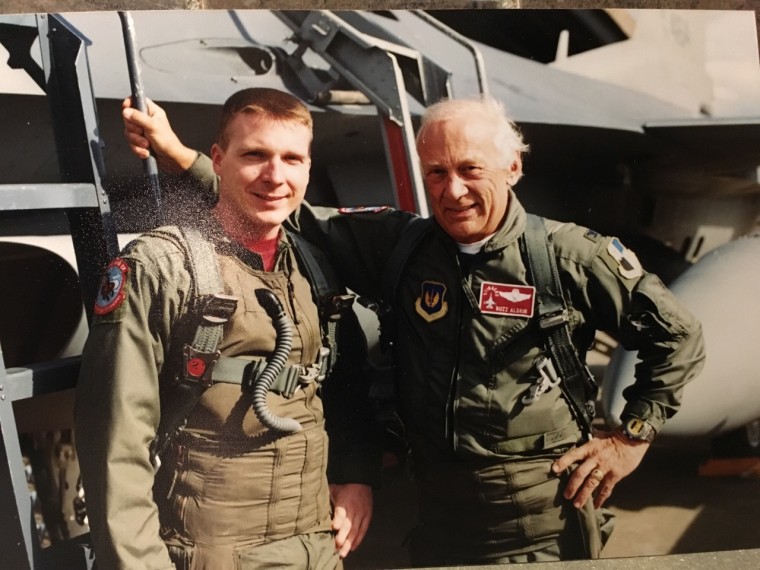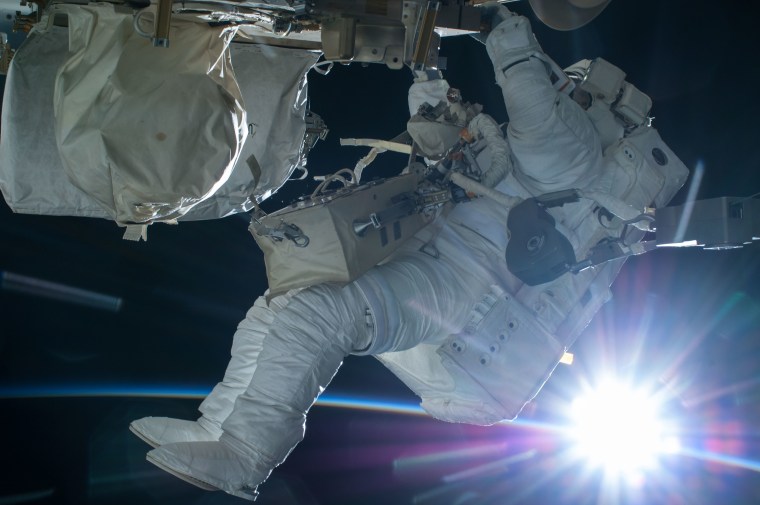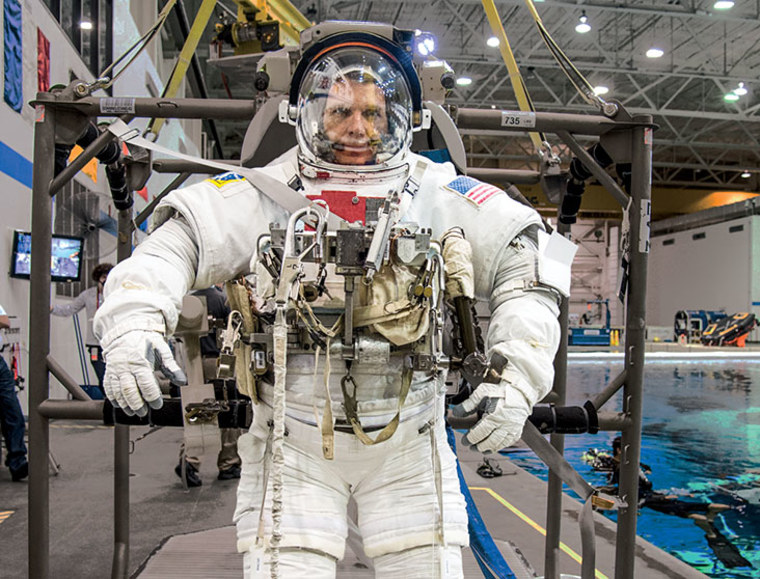The call from NASA was one of the most wonderful and surreal events of my life. It came on July 20, 2000, the 31st anniversary of the Apollo 11 moon landing. I was in a meeting at Edwards Air Force Base in southern California, where I was an F-16 test pilot. Along with 119 other astronaut applicants, I had been waiting anxiously for months to hear the space agency’s final decision on which 17 of us would be picked for the latest class of astronauts.
The phone rang. NASA’s chief astronaut wanted to know if I was still interested in coming to Houston. I knew what that meant, of course, and I wanted to shout out loud. Instead, being a steely-eyed fighter pilot, I simply replied, “Yes sir, I’m still interested.”
I was asked to keep the news to myself until NASA’s formal announcement, so I told my curious colleagues I had been talking with a friend. But my huge grin surely gave away my secret. Within minutes, the squadron loudspeaker was announcing, “Party for Terry Virts’ selection as an astronaut after work today in the conference room.”
In the half-century since humans started going into space, hundreds of astronauts and cosmonauts have gotten similar calls. I’m sure all the others remember their moment with the same clarity and emotion that I recall mine. Each call is the culmination of decades spent preparing — not to mention hoping and dreaming — of going to space. I had dreamed of becoming an astronaut ever since kindergarten, when I read my first book about the Apollo missions.
My coworkers assured me that I didn’t have a chance. But I figured I would apply anyway.
When NASA put out that call for the astronaut class of 2000, I was a 31-year-old Test Pilot School student. Like many of the other students, I saw being a test pilot as a possible ticket to the astronaut corps. Many of my classmates thought they were too young to apply. I was no older than they were — or smarter or more experienced or better looking. And many of my classmates told me that I didn’t have a chance. But I figured I would apply anyway. If NASA said no, fine. And if I got no farther than the initial interview process, well, at least I would have gotten a week off work.
When I did get called for an interview, I went to the Johnson Space Center in Houston thinking, “This is my chance to hang out with astronauts, and I’m going to enjoy it!” Which I did.

As far as aspiring astronauts go, I was about average. I had always done well in school but was never number one in my class. But one thing I did not lack was confidence, especially since I had checked all the usual boxes for becoming an astronaut. True, I wasn’t a doctor or engineer or scientist (or all of those things at once, as some overachieving astronaut candidates are). But I had an applied mathematics degree from the Air Force Academy, a career as an F-16 fighter pilot, and test pilot wings.
So I figured I had a shot.
Young people often ask me what it takes to become an astronaut. It’s a question with no easy answer. But looking back on my 16 years as an astronaut — and that life-changing phone call — I guess there are few things I can say about what it means to have the “right stuff.”

The ability to stay calm under pressure in a fast-paced environment is critical, not just to succeed in space but also to make it through NASA’s training program.
Astronaut candidates get all sorts of instruction, but aviation training, mostly in the venerable T-38 supersonic jet, is by far the most important. That’s because the stakes are so high. It’s one thing to screw up in a ground-based simulator, quite another to do so in a T-38 flying at 40,000 feet. Make a mistake while flying at 500 miles an hour, and your ability to remain alive will be sorely compromised.
But as someone who spent more than seven months in space, with a variety of crewmates, I can say that the most important skill for space fliers is the ability to get along with others. Especially on long-duration missions, it’s essential to be flexible and to have key “soft skills,” like being able to communicate effectively when problems arise and knowing not to sweat the small stuff.
When I was commander on ISS Expedition 43 in 2015, one of my goals was for my American, European, and Russian crew to remain friends when all was said and done. To this day, we still email, text, and joke with each other frequently. Maintaining these relationships, especially during that period of serious tension between the U.S. and Russia, is one of my proudest accomplishments.

My favorite part about being an astronaut? The varied nature of the job — no two days are the same. At different times during my stints in space, I was a mechanic and a pilot and a scientist and a spacewalker and Hollywood producer and a crew doctor and dentist. I was even a hairdresser for my Italian crewmate Samantha Cristoforetti, which was by far the scariest thing I did in space. But that's another story.
